Embed presentation
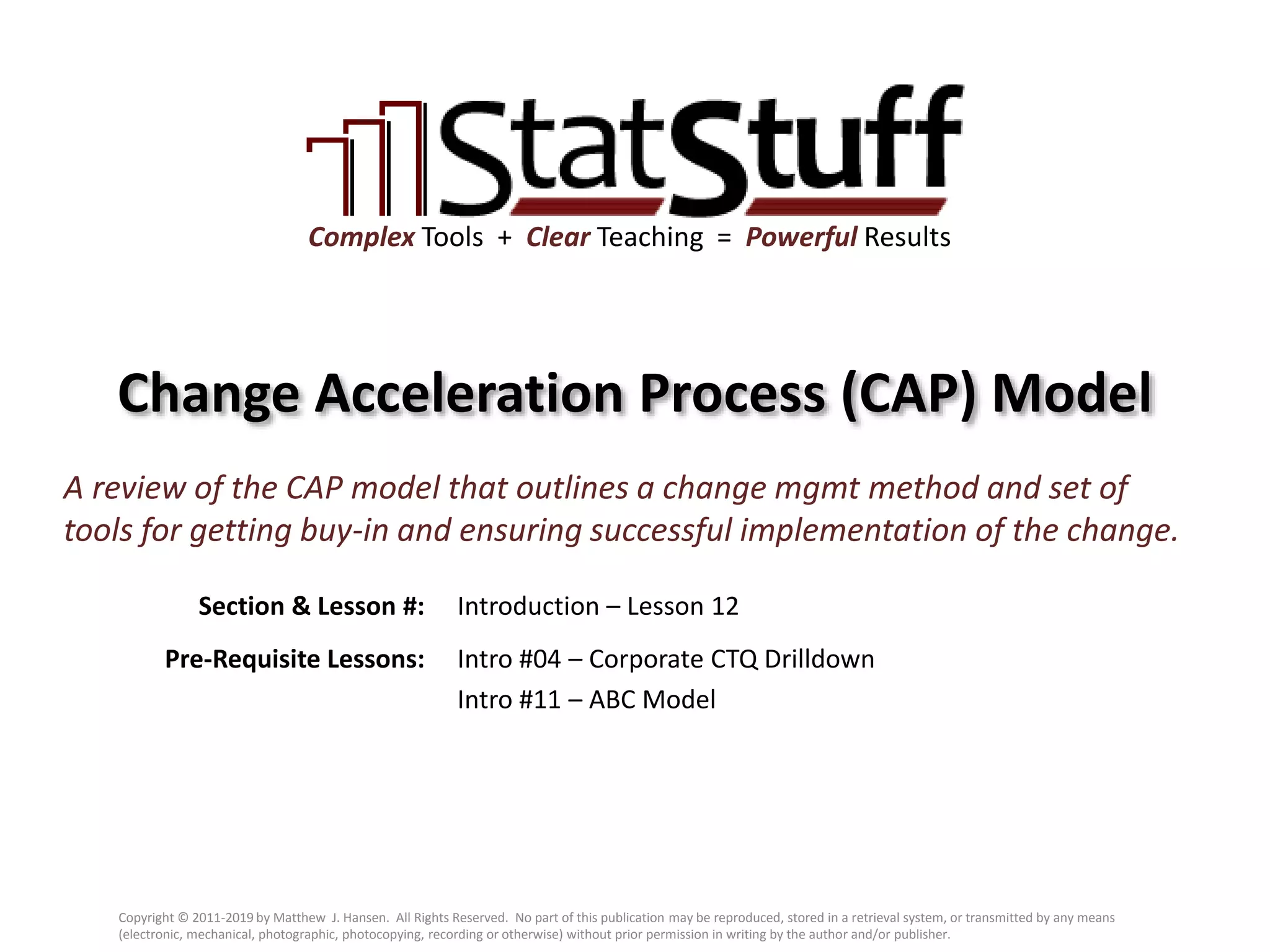
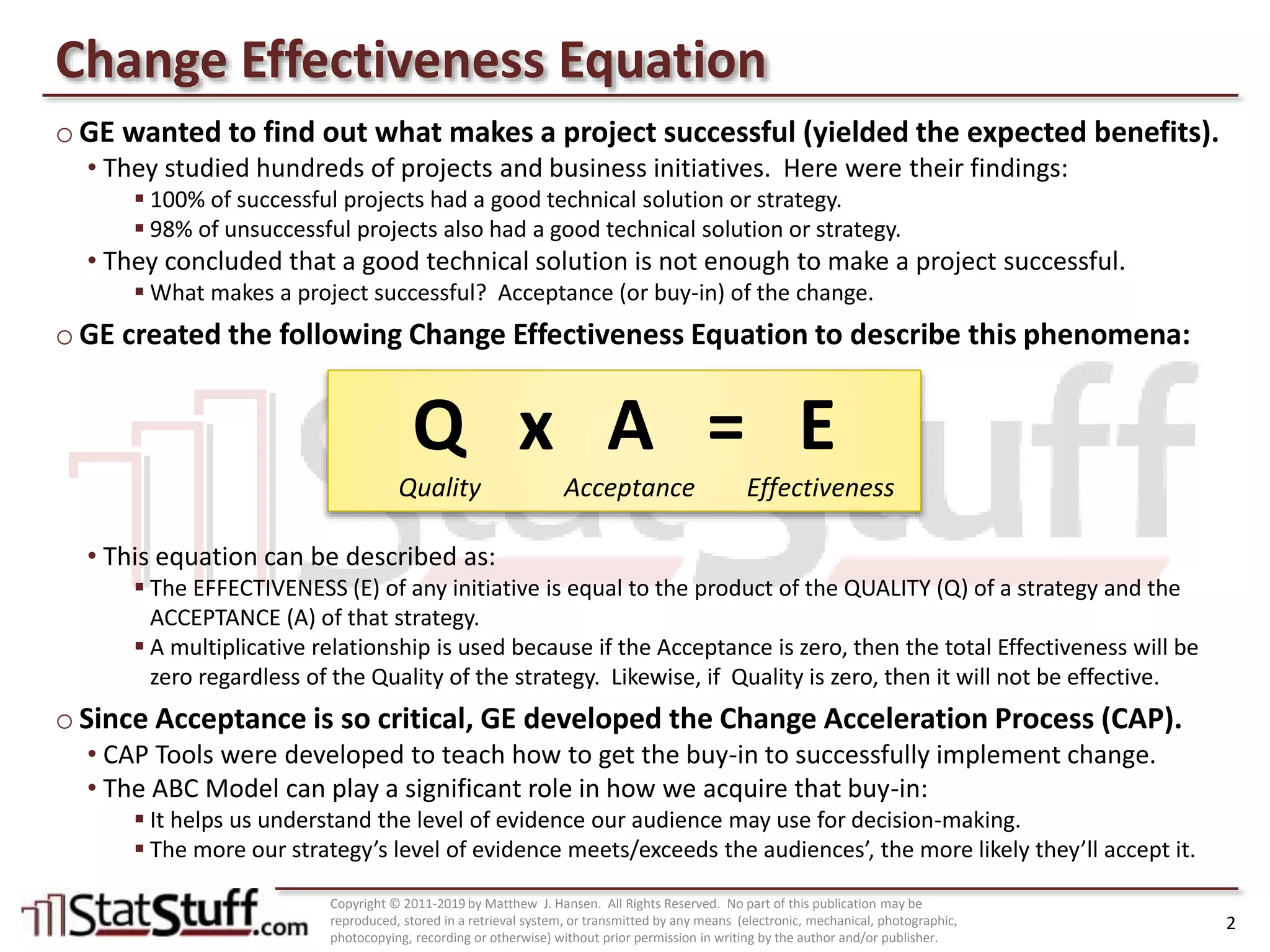
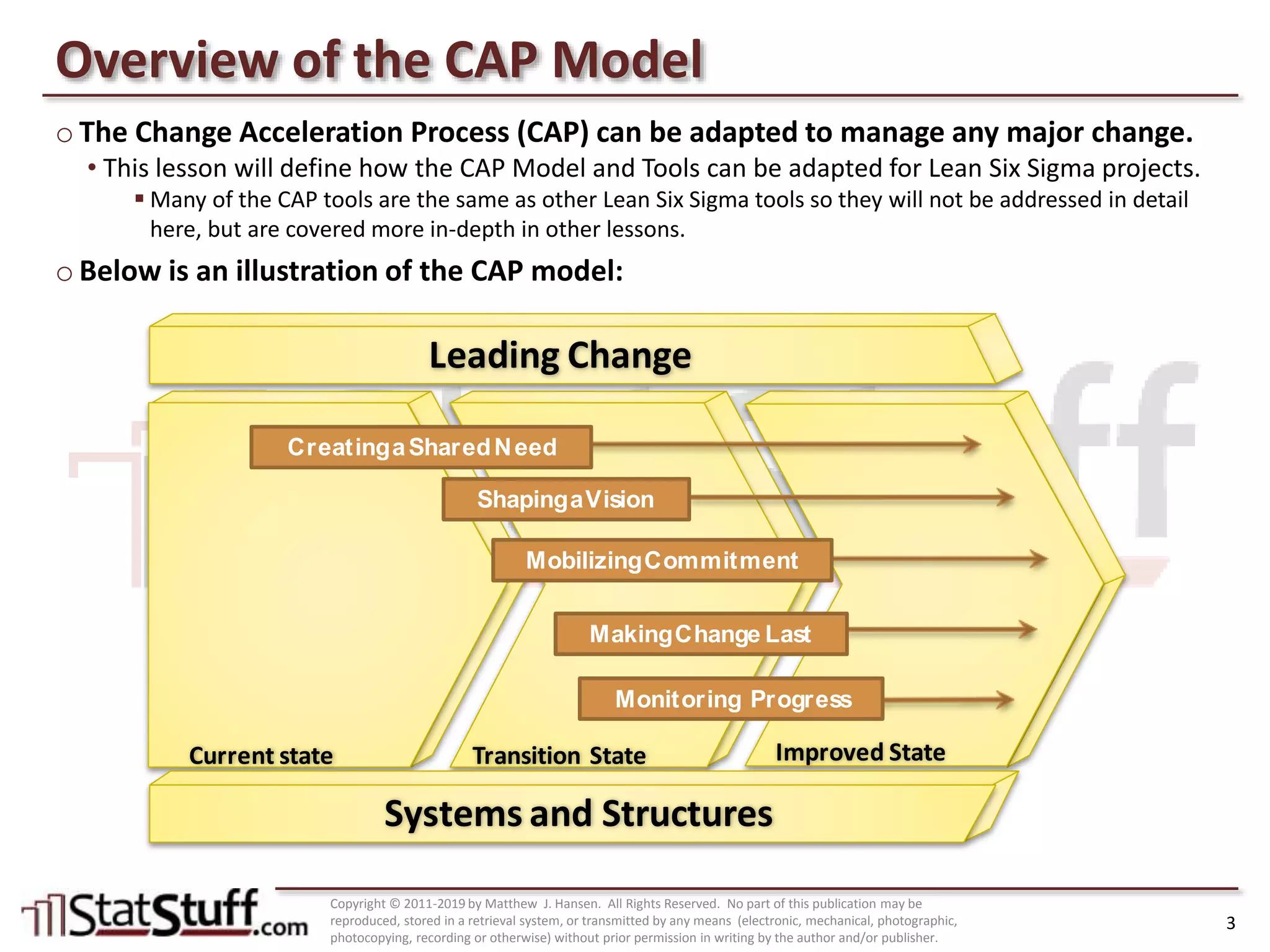
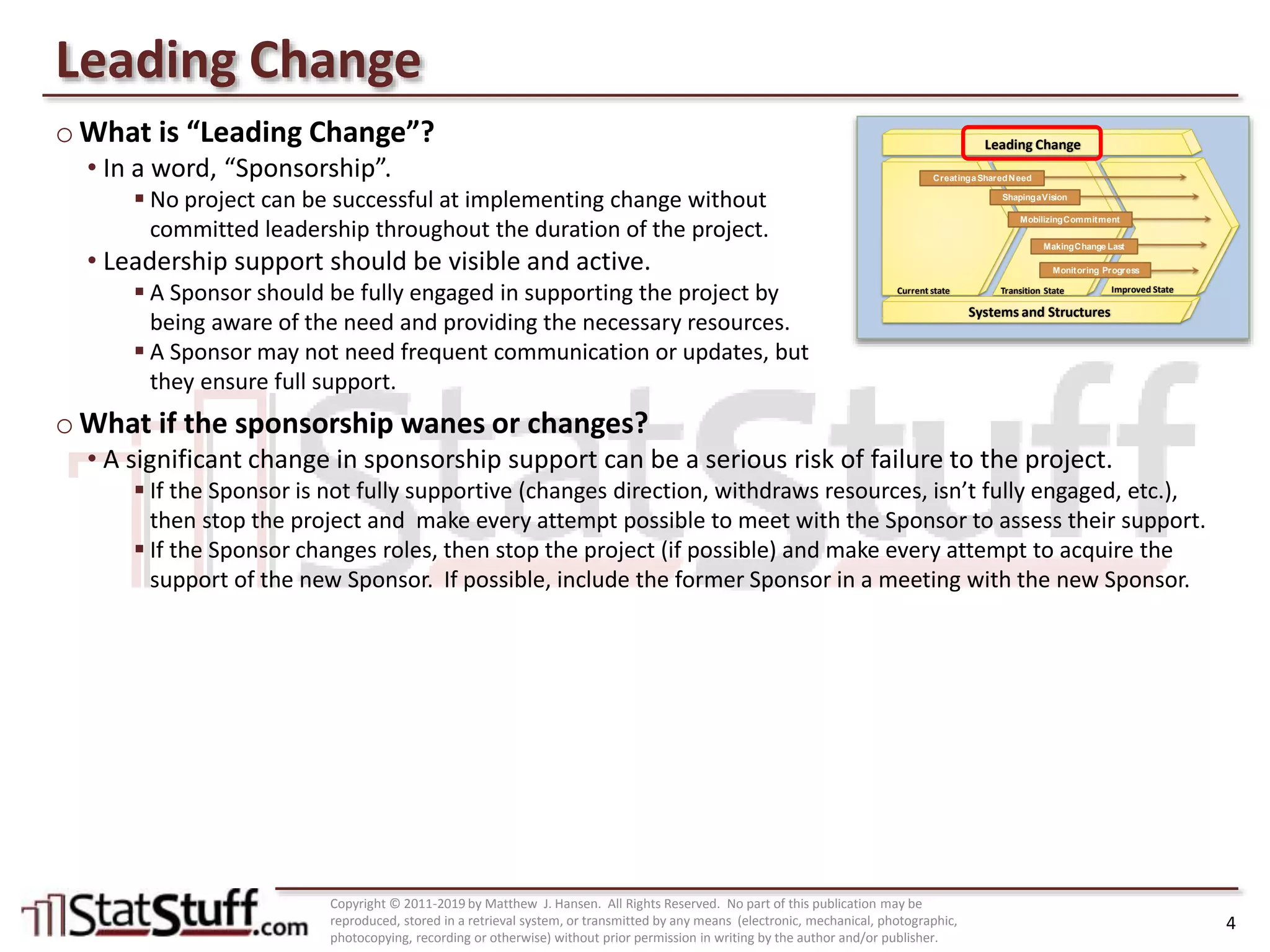
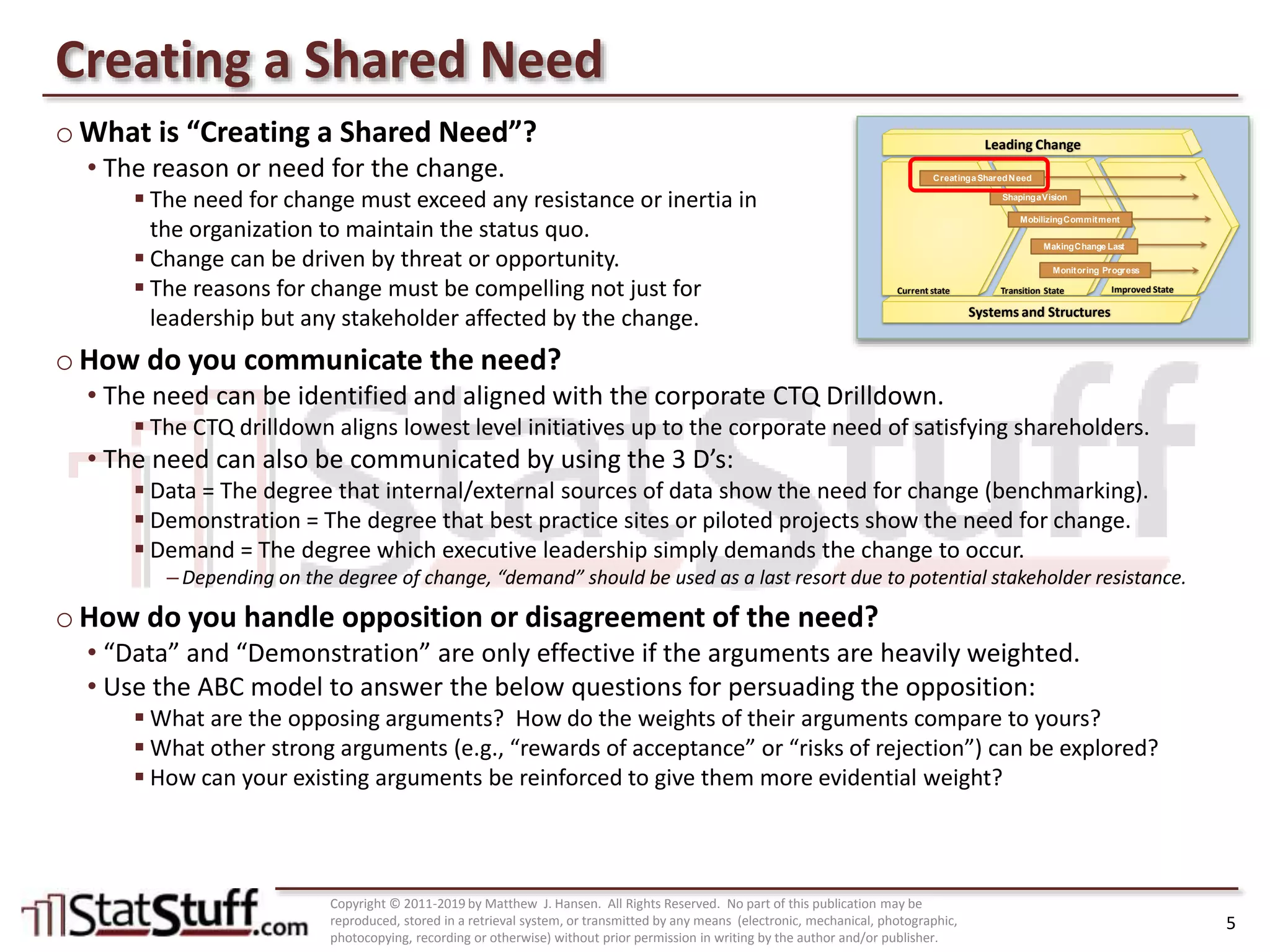

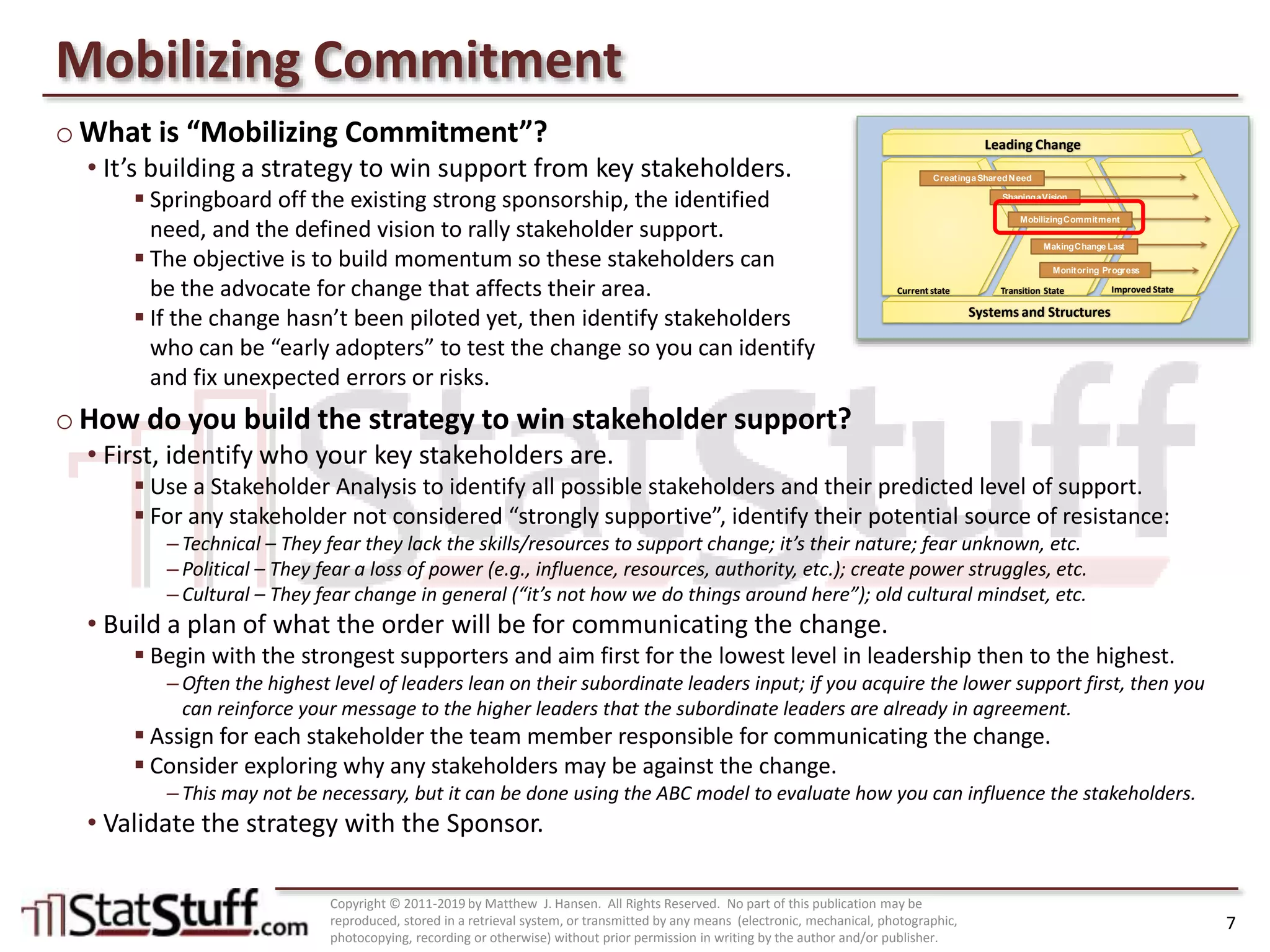

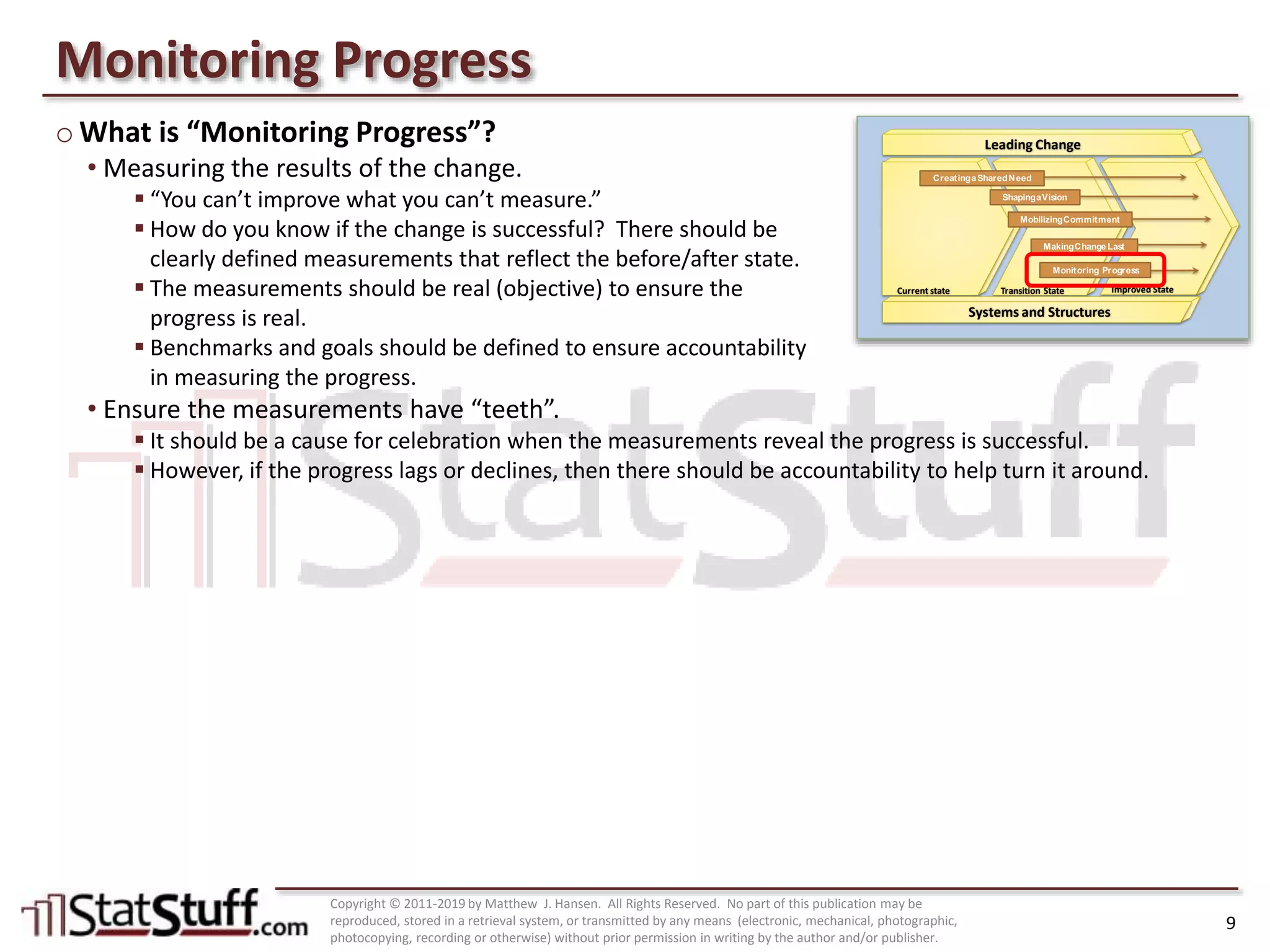
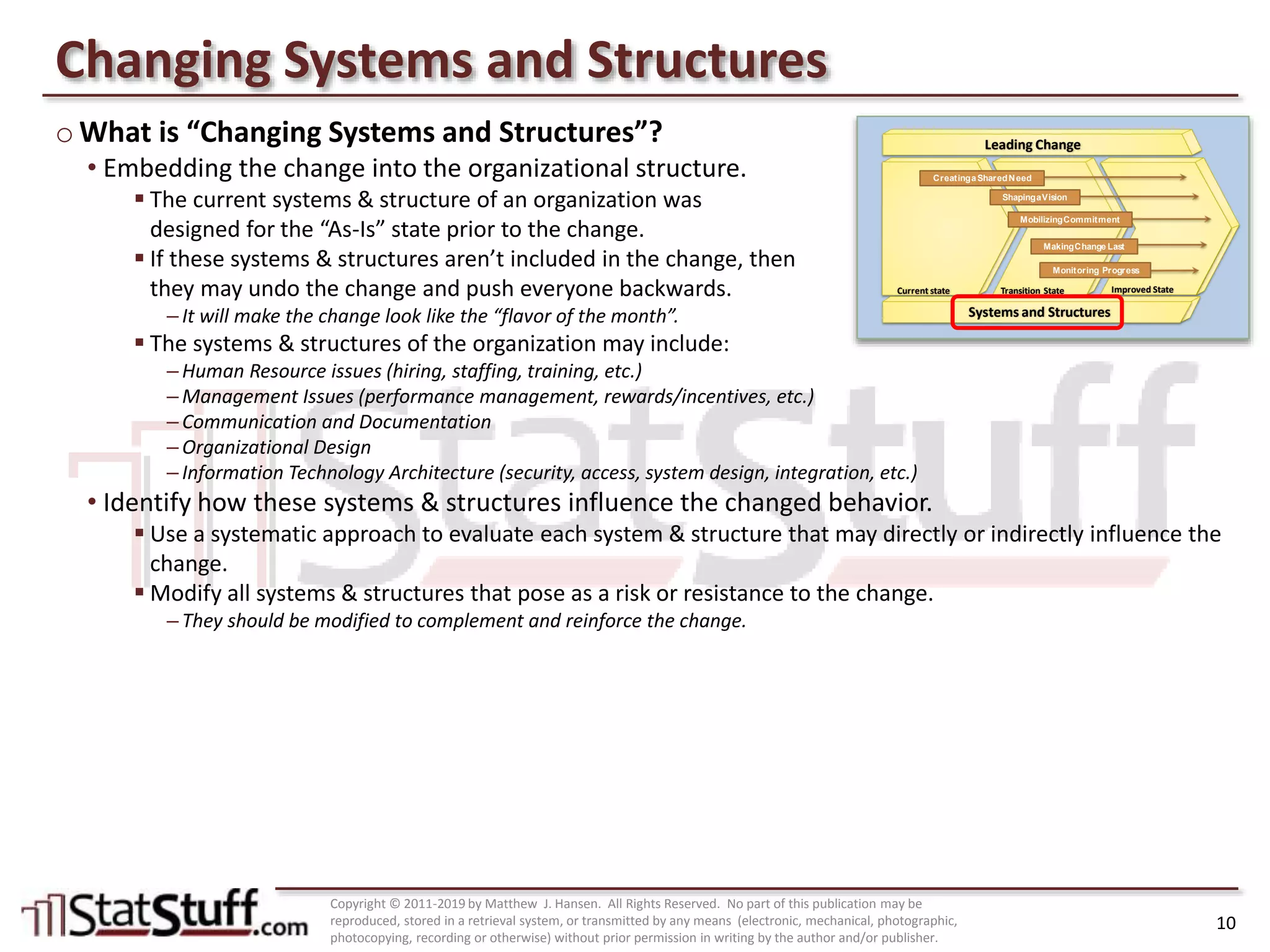
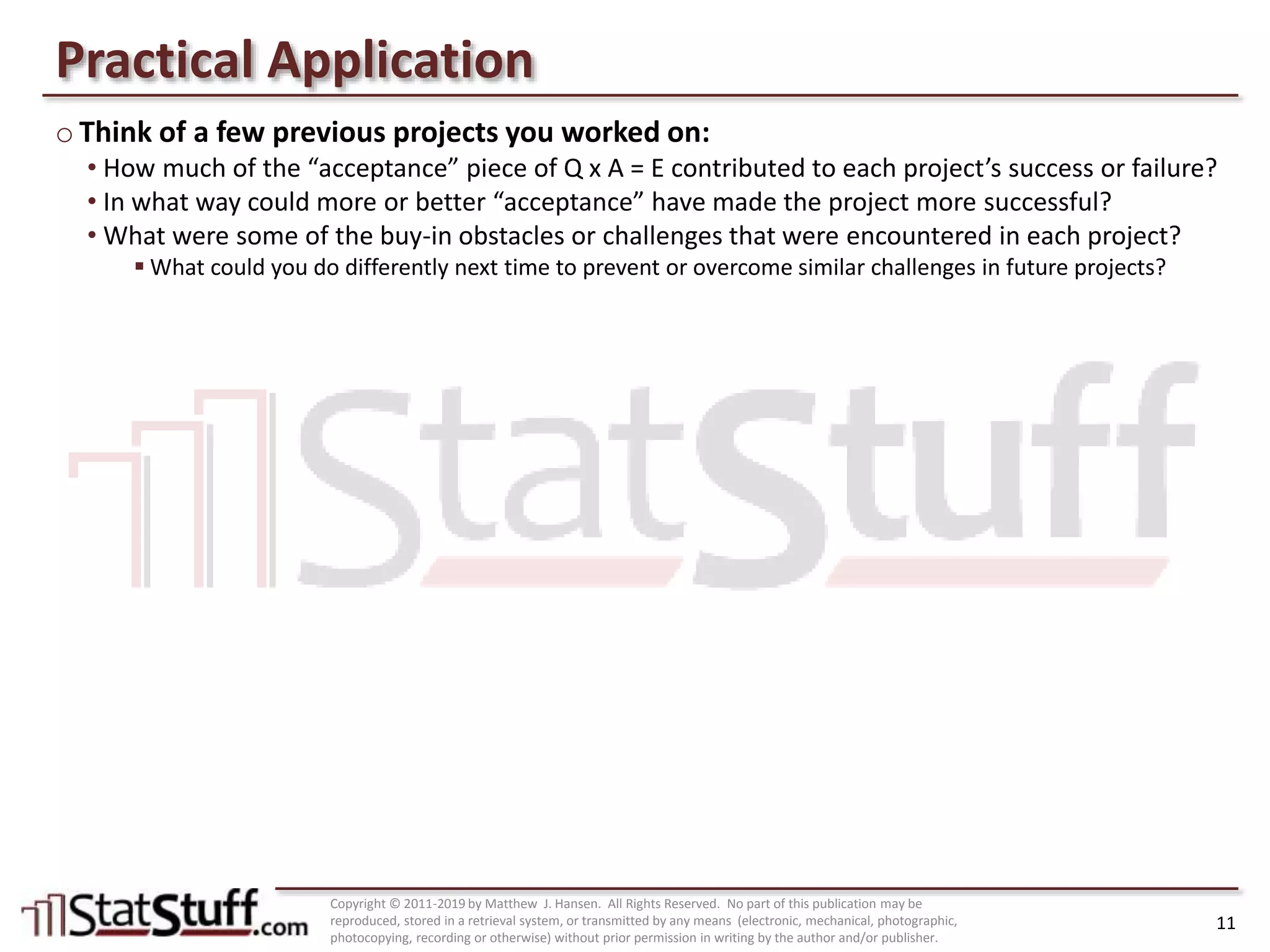
This document provides an overview of the Change Acceleration Process (CAP) model, which outlines a change management method and set of tools for getting buy-in and ensuring successful implementation of change initiatives. The CAP model involves 7 steps: leading change, creating a shared need, shaping a vision, mobilizing commitment, monitoring progress, changing systems and structures, and making change last. Each step is described in 1-2 sentences. Practical application questions are also provided to help users apply the CAP model concepts.
Introduces the Change Acceleration Process (CAP) model for effective change management.
Describes GE's findings on project success, emphasizing quality and acceptance with the equation Q x A = E.
Explains how CAP is versatile for managing change and its application to Lean Six Sigma projects.
Highlights the critical role of committed leadership for successful project sponsorship and support.
Focuses on creating compelling reasons for change, utilizing data and demonstration to gain buy-in.
Describes how to shape and communicate a clear, understandable vision to guide organizational change.
Discusses strategies for mobilizing commitment among stakeholders and addressing potential resistance.
Emphasizes the need for integrating change into the organization and ensuring it becomes standard practice.
Covers the importance of monitoring progress with objective measurements to determine change success.
Details how to modify organizational systems and structures to support and sustain change effectively.
Encourages reflection on past projects regarding acceptance and strategies to improve future change initiatives.










